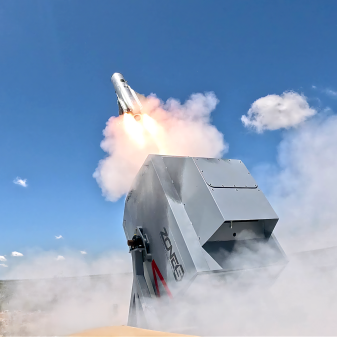DIU approves hydrogen-powered drone for Blue UAS list

The Defense Innovation Unit for the first time has added a hydrogen-powered unmanned aerial system to its roster of drones pre-vetted for rapid procurement and deployment by the U.S. military.
Heven AeroTech announced Thursday that its Z1 drone has been certified for DIU’s Blue UAS Cleared List, an inventory of ready-to-fly unmanned platforms that have been authorized for fast purchase and fielding. The inclusion of the Z1 — which received the list’s highest designation of Blue UAS Select — marks the first time DIU has approved a drone that uses hydrogen fuel for the evolving roster.
Established in 2020, the Blue UAS List is a directory of DIU-approved drones that have undergone rigorous evaluation to ensure the systems meet the Pentagon’s security and supply chain integrity requirements. The effort not only seeks to improve the Defense Department’s ability to quickly buy and scale new unmanned systems, but also to eliminate foreign-made parts within DOD platforms.
Of the 40 drones on DIU’s list, the Z1 is the only system that is powered by transferring hydrogen into a fuel cell to create a chemical reaction and produce electricity. Heven CEO Bentzion Levinson told DefenseScoop that the drone fills critical technology and supply chain gaps across military.
“The biggest challenge that we’ve seen is that short-range drones with batteries are great, but once you get to longer distances … then battery-[powered] drones aren’t relevant, because there’s no way to recharge them,” Levinson said. “What that leaves you with, traditionally, is combustion engines. The problem with combustion engines is that they make a lot of noise and they have a significant thermal signature.”
But by leveraging hydrogen fuel, Heven’s Z1 drone is able to fly for up to 10 hours without creating substantial noise or thermal signature, he said. The unmanned system is refilled by one of the company’s refueling stations, which are able to constantly pull hydrogen from the atmosphere and turn it into usable fuel.
While the Z1 is designed to operate in any environment, Levinson emphasized the drone will be particularly effective in the Indo-Pacific, where aircraft will need to be stealthy and able to fly long distances without being refueled.
“The gap that we’re answering is any system that requires long endurance that you actually want to work in theater, especially the Pacific theater,” he said.
Additionally, the Z1 is a tactical Group 2 UAS capable of vertical take-off-and-landing and can be deployed in just five minutes. It has a 10-pound payload capacity, including one main payload that carries a camera and a secondary slot that can be equipped with communications or other sensor capabilities, Levinson noted.
Overall, the Blue UAS Cleared List will be a critical asset to Secretary of Defense Pete Hegseth’s ongoing initiative to rapidly scale drone production and fielding across the military. At the same time, the Army is establishing a UAS marketplace for its units and wants to build 10,000 drones each month by the end of 2026.
Levinson acknowledged that scaling out drone production will be a challenge that the government and industry will need to work together on. However, programs like Blue UAS will be helpful in cutting down the time and resources currently needed to rapidly field unmanned systems, he noted.
“The U.S. is lacking behind the drone race, but I think it’s solving these issues now,” Levinson said. “Having the right structure of how companies get on the approval list and how a soldier, an officer or person can have a clear list of pre-approved drones they can buy is very, very useful. I think that’s part of solving the solution, where hopefully we’ll be able to move much faster as a nation.”






